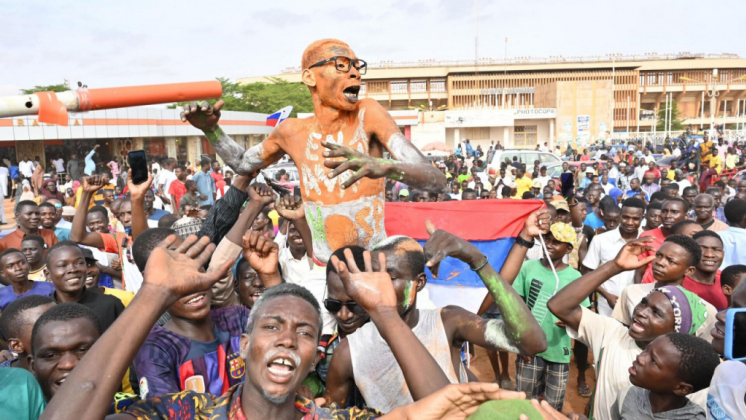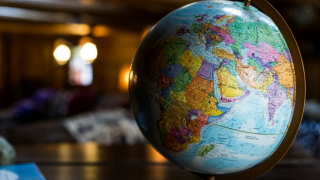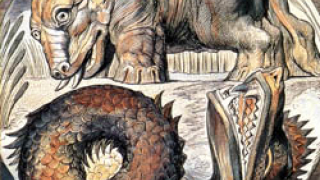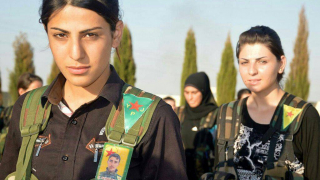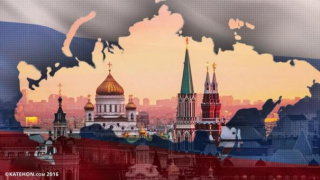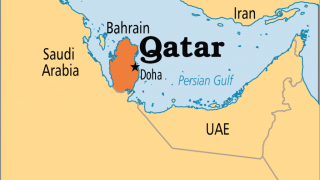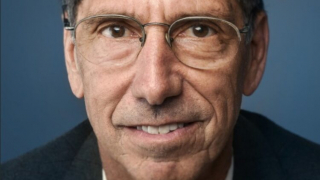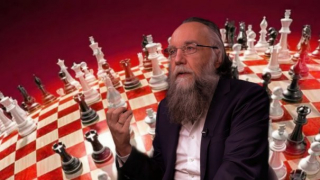Niger: ethnosociology and geopolitics
One of the major world issues in the coming weeks is the possible intervention of France and its allies in Niger. This invasion, if it takes place, will take place under the banner of ECOWAS, the West African economic community dominated by pro-French elements. The state of Niger itself is closely linked to many countries, so the consequences of an invasion could lead to a chain reaction in the region.
Ethnosociology of Niger
The State of Niger has a complex ethnic and geopolitical history and structure. Its population consists of several ethnic groups: the Tuareg Berbers in the north, the Hausa of the Nilo-Saharan branch mixed with the Nilo-Congolese Fulbe in the southeast, and the Jerma, also of the Nilo-Saharan branch, the Songai, who play an important role. The nomadic ethnic groups in northern Niger-the Kanuri, Tihishit, and Tasawak-all belong to the same Nilo-Saharan group.
During the colonial period, the territory was brutally conquered by France and incorporated into French West Africa. But long before the French colonizers, separate political entities and even empires existed in the territory.
Songhai peoples: the Jerma
The Songhai-speaking peoples (of which Jerma is a part) created the Songhai Empire in the 15th and 16th centuries, which extended into the states of Mali, Niger, and Nigeria. The Songhai Empire succeeded the Mali Empire and became the hegemon of West Africa for a time.
The Songhai State was built in the Niger River basin (upper and middle course), expanding from it in both directions-first north and south and then, after Gao, west and east.
The Sultans of Morocco conquered the Songhai Empire in 1591. Later, Songai became one of the regional principalities, along with many others.
The Songhai Empire was built on a rigid and formalized caste stratification, which survived the colonial era and has been maintained by the Jerma, Dendi and other peoples to the present day.
The societies of the Songai peoples consisted of three strictly endogamous castes. The first included free people-chiefs (Zarmakoi of the Jerma), herd owners (herders) and landowners (farmers). The highest stratum of this endogamous group, itself divided into a series of endogamous clans and subcastes, consisted of the descendants of Sonni Ali, now considered a special type of priests and miracle workers (sohanche). The second group consisted of the employees (artisans, blacksmiths, musicians, poets). Finally, the third group was the slaves.
Slaves were a hereditary category, and the descendants of slaves became slaves in turn. However, after four generations slaves could claim free status. At the same time, the dependent caste could not change its status.
Caste differentiation in the Songai peoples is associated with a pronounced and stable patriarchy, which is a significant difference from caste stratification in the Berber peoples, which has some parallels with the Songai but retains links to ancient matriarchal patterns, which in the case of the Songai tribes (Jerma, etc.) are completely absent. The close proximity with the Berbers could lead to the exchange of some cultural elements, but the original Nilo-Saharan patriarchy of the Songai people is a distinctive feature of them.
It is indicative that the structure of Jerma huts - round and with pointed roofs - fully mimics the shape of Nilotic houses, which demonstrates not so much the eastern origin of the Songai as the unity of the cultural type. At the same time, Jerma society is now sedentary, with most of the population engaged in cereal cultivation, fruit tree tending and horticulture, with a widely developed practice of livestock rearing.
Members of the Jerma upper class consider it a duty to own a horse, a sign of their membership in the military aristocracy. The Jerma are warlike and historically have raided neighboring peoples, taking cattle and enslaving captives for use in agriculture or for sale in slave markets. The slave trade was a traditional economic institution among the Songai, as well as among neighboring Berbers and Arabs.
The Jerma people played an important role in the history of the modern state of Niger. For example, Niger's first president after independence was Jerma Amani Diori (1916-1989). In 1974, he was overthrown in a military coup by another Jerma, Seyni Kuntche (1931-1987), who became president of Niger and remained so until his death.
Salou Djibo, who led a coup in 2010, was also a Jerma.
Today the Songhai peoples-Jerma and others-make up only 21 percent of Niger's population. However, they control the main political processes.
Hausa
The Hausa people, like the Jerma, belong to the Nilo-Saharan language family. Historically, the Hausa were closely related to the nomadic Niger-Congolese ethnic group, the Fulbe (or Fulani), widely distributed in West Africa, who were an early and major force in the spread of Islam among the Negroid peoples.
The territory inhabited by the Hausa in West Africa is sometimes referred to as "Hausaland." In ancient times, the Hausa had a network of developed city-states linked by language, culture and trade. Most of Hausaland territory is in Nigeria today, but a significant percentage of Hausa make up the population of neighboring Niger.
Hausa legends trace their origins to the Aire Plateau in central Niger. Several Hausa ethnographic groups name themselves after states that existed or exist (in traditional form). Thus, the Hausa of Niger include the Gobirawa (city-state of Gobir, the traditional ruler is the Sarkin of Gobira, who lives on the territory of Nigeria), the Katsinawa or Maradawa (Katsina state, the ruler is the Sarkin of Katsina, exiled by the Fulbe to Maradi), the Damagarawa (sultanate of Damagaram), the Daurawa (state of Daura), the Konnawa (city of Birnin-Konnie), the Aderawa, the Mauri and others.
In the early 19th century, most of the city-states in Hausaland were conquered by a Fulbe Islamist army ("Jihad Fulani") led by Usman dan Fodio and incorporated into the Sokoto Caliphate. The city-states of Maradi and Damagaram were located in Niger territory. After Usman dan Fodio's conquests, the Hausa began to move en masse into the territory of present-day Niger.
The Hausa are a sedentary people engaged in agriculture, handicrafts and trade. Today the Hausa make up the majority of Niger's population (55 percent). They live in the south of the country, along the border with Nigeria, from Dogonduchi in the west to Zinder in the east. The Hausa are also numerous in the Tahoua and Niamey regions.
Niger President Mahamadou Issoufou, who ruled from 2011 to 2021, was of Hausa descent.
Fulbe
Another major West African people, the Fulbe, in Niger are closely mixed with the Hausa, and most Nigerian Fulbe speak the Hausa language. In Hausa-Fulbe societies, the Fulbe ethnic group tends to form a nobility, the Toronkawa (in Nigeria).
Socially and culturally, the Fulbe people are one with the Hausa. That said, most Fulbe peoples are spread across a wide area of West Africa, from Mauritania, Gambia, Senegal, and Guinea to Cameroon and Sudan.
Traditionally, Fulbe society has three castes: the rulers, the Rimbbe; the intellectuals, custodians of cultural heritage, the Ninbbe; and the slaves, the Jayabbe.
The Fulbe are nomads and pastoralists and consider the arid interior of West Africa as their territory, regardless of national boundaries. Some Fulbe live in urban areas today.
They represent 8.5 percent of the country's population.
Niger's first Fulbe president was Mamadou Tandja (1938-2020).
Tuareg
Western Niger and, more generally, the northern part of the state have traditionally been inhabited by members of another non-Niger people, the Tuareg.
The Tuareg are nomadic and live throughout the Sahara: the northern half in southwestern Libya and southeastern Algeria, and the southern half in western Niger, eastern Mali, and northern Burkina Faso. The territory occupied by the Tuareg is comparable in size to that of a large African state. The Tuareg are one of the most archaic Berber peoples, who have preserved the most ancient customs and traditions. In particular, even today the Tuareg forbid men to expose their faces. Tuareg women do not cover their faces. Women enjoy a privileged position in Tuareg society; the kinship system is matrilineal and matrilocal. Many important decisions in society are made by the chief's mother (aminokal), who enjoys great authority. Despite the spread of Islam with the practice of polygamy, Tuareg marriage is strictly monogamous.
The Tuaregs have preserved the ancient Berber language, Tamashek, and a special writing system, Tifinag, based on the ancient Libyan script.
Because of their predominantly nomadic and pastoral lifestyle and non-vertical socio-political patterns, the Tuareg have never had their own state, but have actively resisted integration into other existing political systems. The Tuareg have traditionally dominated sedentary societies adjacent to Tuareg areas, regularly raiding them, imposing tribute, and enslaving them (the Tuareg have a special caste of slaves, the Inclans and Ineden blacksmiths, who are ethnically different from the Tuareg themselves and are composed of Negroes). A portion of the Tuareg practice hoe farming. The Tuareg are also characterized by the habit of raising goats, a characteristic of ancient matriarchal cultures.
During the creation of French West Africa, it was the Tuaregs who put up the fiercest resistance to the French, culminating in the Tuareg rebellion of 1916-1917. The Tuaregs could only be persuaded to recognize French authority by bribing the leaders of some influential tribes.
After the independence of the Maghreb and Central African countries, where the Tuareg made up a significant percentage of the population, the traditional pattern of the ethno-sociological balance of power in the Sahara and the role of the Tuareg in this balance began to change rapidly. This affected the Tuareg way of life, the intensity of their influence diminished, and the centuries-old structures of relations with neighboring peoples were disrupted.
Gradually concepts of Tuareg nationalism emerged. It is based on historical precedents. Thus, in Niger, the Tuaregs created the Sultanate of Agadez in 1449. In 1500 it was conquered by the Songhai Empire, but in 1591 it regained independence. The sultanate flourished in the 17th century. The French conquered it in 1900, but the Tuareg resisted for another four years and never recognized the legitimacy of French rule.
In the western parts of Niger, the Tuareg are traditionally strong and make up a large part of the population.
In the 1990s, the Sahara Desert Tuareg Armed Forces were created in Niger. This group rebelled in 1990 and continued military actions against the government until 1995, after which a truce was reached. The Tuaregs resumed their struggle against the Niger government in 2007 in the form of the Nigerian Justice Movement, which was joined by anti-government groups from the Fulbe people (Nigerino-Congolese family) and the Toubou nomads (Nilo-Saharan family). The leader of the Nigerian Justice Movement is a Tuareg, Agali Ag Alambo.
Between 2007 and 2009, Tuareg unrest broke out not only in Niger, but also in neighboring Mali, as Tuaregs equally inhabit the contiguous territories of both states. Therefore, the Tuareg armed rebellion in Niger also involved Mali's Tuaregs, particularly one of the most influential politicians and warlords, Ibrahim ag Bahanga.
In 2012, the Tuaregs took advantage of the coup in Mali and proclaimed the creation of the independent state of Azawad in the territory of the same name. The capital of this area is Tombouctou. The Tuaregs later softened their demands, accepting autonomy and broad powers within Mali. It is in Mali that Tuareg nationalism has manifested itself most clearly, as the Tuaregs are the main population in the north of the country, but in political terms they are not well represented at the state level.
In present-day Niger, the Tuareg make up 9 percent of the population and live mainly in the north of the country, in the Agadez region (named after the ancient state) and in the Niger Valley. It is important to note that the Tuaregs of Niger form a single community with the Tuaregs of neighboring Mali, Algeria and Libya.
The geopolitics of Niger
In 2021, Mohamed Bazoum, an all-French, ethnic Arab politician from Fezzan, close to former President Mahamadou Issouf, whom he succeeded, became president of Niger.
On July 26, 2023, Mohamed Bazoum was overthrown by Niger's armed forces led by Brigadier General Abdurahmane Tchiani, an ethnic Hausa.
The rebels captured Mohamed Bazoum and accused him of corruption and favoring colonial France. At the same time, the rebels proclaimed a path of rapprochement with the anti-French anticolonial regimes of Mali and Burkina Faso, oriented toward a multipolar world and a rapprochement with Russia.
For France, Niger is an important source of uranium. Paris is extremely concerned about its energy security, which for the past half century has been maintained at the expense of this poorest country in Africa. Being in the center of the Sahel natural zone makes Niger's northern regions geostrategically important. Among other things, it is a caravan route for transporting gold, drugs, weapons, illegal labor, and terrorist groups that destabilize the whole of Africa. For example, drugs reach Europe through Niger and the northern regions of Mali, where the French have prevented local authorities from entering since 2013. In the same region, Agadez hosts a U.S. military base with an airfield that can accommodate military transport aircraft.
Neither the United States nor France plans to withdraw its troops from Niger. At least, there have been no official statements to that effect. However, the experience of neighboring Mali suggests that the presence of the French military could be questioned after the consolidation of the new government.
There remains the possibility of military intervention by France and its allies in Niger.
In addition to the restoration of the "legitimate" President Bazoum, the security situation could be a pretext for intervention. Since the overthrow of the pro-French president, Islamic State jihadists, banned in Russia, have become more active in Niger. At the same time, former Tuareg rebel leader Rissa Ag Boula announced the creation of the "Council of Resistance for the Republic" (CRR) and the beginning of the fight against the Niger army. Tuareg rebels have reared their heads in recent years in both Algeria and Mali, coinciding with the deterioration of these countries' relations with France.
Military intervention by France and allies, if it takes place, will be accompanied by attempts to destabilize the Sahel area using Tuareg and jihadist factors. Fulani and Tuareg groups currently serve as bases for extremist movements in the region, notably the Islamic State in the Greater Sahara, a branch of ISIS banned in Russia, and a coalition of groups loyal to al-Qaeda (JNIM), also banned in Russia, led by former Tuareg nationalist Iyad Ag-Ghali. Even in the absence of intervention, however, outside forces could seek to foment instability in Niger, with the risk of escalating tensions throughout the Sahel, where the same populations and cross-border groups operate.
NATO's intervention in Libya in 2011 not only undermined the country's territorial integrity for a decade, turning it into a stronghold of extremism and criminality. The Tuaregs displaced from Libya by Muammar Gaddafi's forces became the force that started the uprising in northern Mali in 2012, which was later joined by jihadists. The destabilization of Libya eventually destabilized the Sahel, and France's actions against jihadists strengthened local separatist groups, which abound in Mali and Niger. Should attempts to destabilize Niger and interfere in its affairs be resisted by regional powers Mali, Burkina Faso, and Algeria, we should expect the conflict to escalate into a major war in the Sahel. This, in turn, will affect the situation throughout West and North Africa.
In theory, the threat can be eliminated if Niger turns to new partners. Obviously, this could be Russia and PMC "Wagner," which have proven themselves in CAR and Mali. However, Turkey is also actively trying to establish itself in the region. Ankara is developing ties with countries that support Niger in the face of possible intervention-Mali and Burkina Faso-and has already opposed intervention in Niger. It should be noted that Burkina Faso is a major consumer of Turkish military products.
Traduzione di Costantino Ceoldo

